A plant-based diet mostly includes foods that come from plants, like fruits, veggies, whole grains, nuts, seeds, and legumes.
It limits or completely avoids animal products, such as meat, dairy, and eggs. It is important to eat whole, lightly processed foods that are high in fiber and nutrients.
A plant-based diet is linked to many health benefits, such as a lower chance of chronic diseases like heart disease, diabetes, and some cancers. In addition, they are good for the earth and animals.
Why Go Plant-Based diet?
1. **Health Benefits**:
**Better Heart Health** People who eat mostly plants tend to have lower cholesterol, a lower chance of heart disease, and better blood pressure.
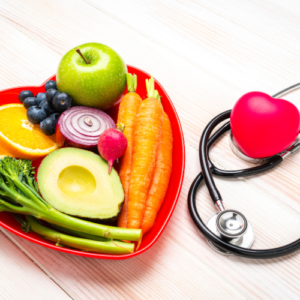
– **Weight Management**: Plant-based foods tend to have fewer calories and more fiber, which helps you lose weight and keep it off.
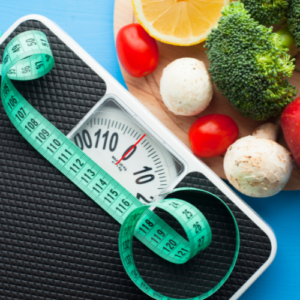
**Lower chance of Chronic Diseases**: Eating more plants can lower your chance of getting diabetes, some cancers, and other long-term illnesses.

Digestive Health: Plant foods that are high in fiber help keep your gut healthy and help you have normal bowel movements.

2. Ethical Considerations
**Animal Welfare**: A lot of people choose plant-based meals because they don’t want to hurt animals. To help animals as little as possible, they don’t eat meat, dairy, or eggs.

– **Compassion**: Eating plants is in line with a caring way of life that stresses being kind to all living things.
– **Reduced Carbon Footprint**: Diets that are high in plants have less of an effect on the environment than diets that are high in meat. A lot of carbon gases are released when livestock are raised.

– *Conserving water*: Growing food plants needs less water than growing animals for meat.
• **Preserving Ecosystems**: When we choose plant-based choices, we help protect forests, wildlife habitats, and different kinds of life.
Innovative Products: There are now plant-based options for meat, dairy, and eggs on the market, which makes the switch easy for people.
– In terms of health trends: As more studies show that plant-based meals are good for you, more and more people are interested in and ready to try this way of life.
To sum up, plant-based meals are good for your health, the environment, and your morals.
People are becoming more and more interested in plant-based eating, whether it’s for their own health or to help the world. 🌱🌎
Essential Plant-Based Foods
1. Fruits and Vegetables
Fruits:
- Blueberries: Packed with antioxidants like anthocyanins, blueberries are known for their brain-boosting properties. Enjoy them in smoothies, mixed into yogurt, or as a topping for oatmeal or cereal.
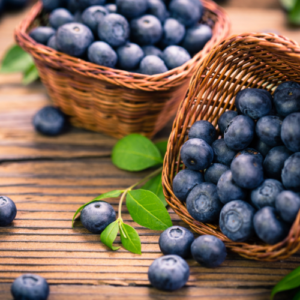
2.Spinach: This leafy green is loaded with nutrients like iron, calcium, and vitamins A and K. Incorporate spinach into salads, sandwiches, wraps, or sauté it with garlic and olive oil as a side dish.
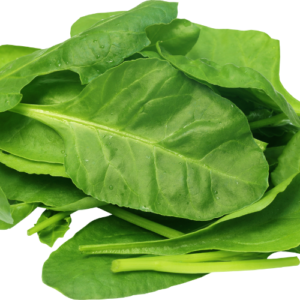
3.Strawberries: Rich in vitamin C and antioxidants, strawberries are great for immune support and skin health. Enjoy them fresh as a snack, sliced on top of pancakes or waffles, or blended into a refreshing summer smoothie.
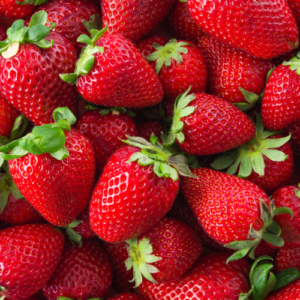
4. Kale: Another powerhouse leafy green, kale is packed with vitamins A, C, and K, as well as calcium and fiber. Use kale in salads, stir-fries, soups, or bake kale chips for a crunchy snack.
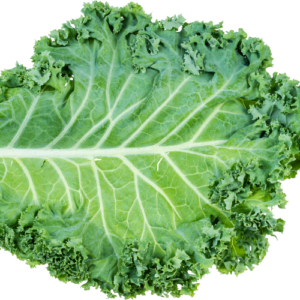
5. Oranges: Bursting with vitamin C and other antioxidants, oranges are refreshing and hydrating. Enjoy them as a snack, squeeze fresh orange juice for a morning boost, or add orange segments to salads or desserts.
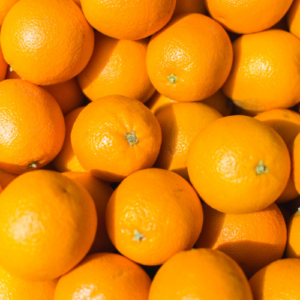
Vegetables:
- Broccoli: Rich in vitamins C and K, folate, and fiber, broccoli is a nutritional powerhouse. Roast broccoli with olive oil and garlic, steam it as a side dish, or add it to stir-fries and pasta dishes.
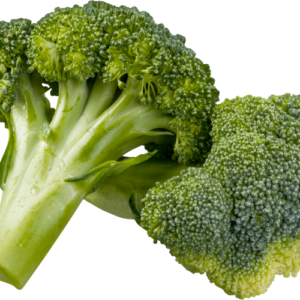
- Carrots: Loaded with beta-carotene, vitamins, and fiber, carrots are great for eye health and digestion. Enjoy raw carrot sticks with hummus, roast them with honey and herbs, or add them to soups and stews.
- Avocado: Avocados are rich in healthy fats, fiber, potassium, and vitamins E and K. Mash avocado onto toast, slice it onto salads or sandwiches, or blend it into smoothies for a creamy texture.
- Bell Peppers: Vibrantly colored bell peppers are packed with vitamin C and antioxidants. Slice them for dipping in hummus or guacamole, add them to salads, stir-fries, or stuff them with quinoa and vegetables for a nutritious meal.
- Tomatoes: Tomatoes are rich in lycopene, vitamin C, and potassium, known for their heart-healthy benefits. Use fresh tomatoes in salads, sandwiches, or bruschetta, or cook them into sauces, soups, and stews.
2. Whole Grains
Whole grains are an essential component of a balanced diet, providing valuable nutrients such as fiber, vitamins, and minerals. Let’s explore some popular whole grains like quinoa, brown rice, oats, and whole wheat, along with their nutritional benefits and recipe ideas:
1. Quinoa:
- Quinoa is a complete protein, containing all nine essential amino acids, making it an excellent choice for vegetarians and vegans.
- It’s rich in fiber, providing about 5 grams per cooked cup, which aids digestion and promotes satiety.
- Quinoa is also a good source of minerals like manganese, magnesium, phosphorus, and iron.
Recipe Idea: Quinoa Salad with Chickpeas and Vegetables
- Cook quinoa according to package instructions and let it cool.
- Toss cooked quinoa with chickpeas, diced cucumbers, cherry tomatoes, red onions, and fresh herbs like parsley or cilantro.
- Dress with a mixture of olive oil, lemon juice, minced garlic, salt, and pepper. Serve chilled as a refreshing and nutritious salad.
2. Brown Rice:
- Brown rice is a whole grain that retains its bran and germ layers, providing more fiber, vitamins, and minerals compared to white rice.
- It’s high in manganese, selenium, magnesium, and B vitamins, such as niacin and thiamine.
- Brown rice has a lower glycemic index compared to white rice, which helps regulate blood sugar levels and may reduce the risk of type 2 diabetes.
Recipe Idea: Vegetable Stir-Fry with Brown Rice
- Cook brown rice according to package instructions and set aside.
- In a skillet, stir-fry your favorite vegetables such as bell peppers, broccoli, carrots, snap peas, and mushrooms in a bit of sesame oil until tender-crisp.
- Add cooked brown rice to the skillet and toss with the vegetables. Season with soy sauce, garlic, ginger, and a splash of rice vinegar for flavor. Serve hot as a nutritious and satisfying meal.
3. Oats:
- Oats are a rich source of soluble fiber, particularly beta-glucan, which helps lower cholesterol levels and promotes heart health.
- They’re also high in manganese, phosphorus, magnesium, and zinc, as well as B vitamins like folate and thiamine.
- Oats have a low glycemic index and can help stabilize blood sugar levels, making them suitable for people with diabetes or those watching their carbohydrate intake.
Recipe Idea: Overnight Oats with Fruit and Nuts
- In a jar or container, combine rolled oats with your choice of milk (dairy or plant-based), chia seeds, and a dash of vanilla extract.
- Add sliced fruits such as bananas, berries, or apples, and a handful of nuts or seeds for extra crunch and nutrition.
- Stir well, cover, and refrigerate overnight. In the morning, top with additional fruit, nuts, or a drizzle of honey or maple syrup, and enjoy a convenient and nutritious breakfast.
4. Whole Wheat:
- Whole wheat is a staple grain that retains the nutrient-rich bran and germ layers, providing fiber, vitamins, and minerals.
- It’s high in dietary fiber, which aids digestion, promotes satiety, and helps regulate blood sugar levels.
- Whole wheat contains vitamins B6 and E, as well as minerals like magnesium, manganese, and selenium.
Recipe Idea: Whole Wheat Pasta Primavera
- Cook whole wheat pasta according to package instructions until al dente.
- Meanwhile, sauté a variety of colorful vegetables such as bell peppers, zucchini, cherry tomatoes, and asparagus in olive oil until tender.
- Toss cooked pasta with the sautéed vegetables, along with minced garlic, fresh basil, grated Parmesan cheese (optional), and a squeeze of lemon juice. Serve hot as a wholesome and flavorful pasta dish.
3. Legumes and Beans:
Legumes and beans are nutrient-dense foods that are rich in protein, fiber, vitamins, and minerals. Let’s explore some popular legumes like lentils, chickpeas, black beans, and others, along with their nutritional benefits and versatility, followed by some delicious bean-based recipes:
1. Lentils:
- Lentils are a great source of plant-based protein, providing about 18 grams per cooked cup, making them an excellent meat alternative for vegetarians and vegans.
- They’re high in dietary fiber, with around 16 grams per cooked cup, which aids digestion, promotes satiety, and helps regulate blood sugar levels.
- Lentils are versatile and can be used in a variety of dishes, including soups, stews, salads, curries, and veggie burgers.
2. Chickpeas (Garbanzo Beans):
- Chickpeas are rich in protein, with about 15 grams per cooked cup, as well as dietary fiber, which supports digestive health and helps control appetite.
- They’re also a good source of vitamins and minerals, including folate, iron, phosphorus, and manganese.
- Chickpeas can be used in a wide range of dishes, such as hummus, falafel, curries, salads, soups, and roasted as a crunchy snack.
3. Black Beans:
- Black beans are packed with protein, providing about 15 grams per cooked cup, and dietary fiber, which aids digestion and helps maintain bowel regularity.
- They’re also rich in antioxidants, such as anthocyanins, which have anti-inflammatory properties and may help protect against chronic diseases.
- Black beans are commonly used in Mexican and Latin American cuisine, including dishes like black bean soup, burritos, tacos, salads, and dips.
4. Other Legumes (e.g., Kidney Beans, Cannellini Beans, Pinto Beans):
- Kidney beans are high in protein and fiber, making them a filling and nutritious addition to chili, bean salads, and rice dishes.
- Cannellini beans are creamy and mild in flavor, perfect for soups, stews, pasta dishes, and bean dips like white bean hummus.
- Pinto beans are versatile and can be used in Mexican-inspired dishes like refried beans, bean burritos, and bean salads.
Bean-Based Recipes:
- Lentil Soup:
- In a large pot, sauté diced onions, carrots, and celery in olive oil until softened.
- Add rinsed lentils, vegetable broth, diced tomatoes, minced garlic, and seasonings like cumin, paprika, and thyme.
- Simmer until lentils are tender, then blend part of the soup for a creamy texture if desired. Serve hot with crusty bread.
- Chickpea Salad:
- Combine cooked chickpeas with diced cucumbers, tomatoes, red onions, and bell peppers in a large bowl.
- Toss with olive oil, lemon juice, minced garlic, chopped parsley, salt, and pepper. Serve chilled as a refreshing and protein-rich salad.
- Black Bean Tacos:
- Heat corn or flour tortillas and fill with seasoned black beans, shredded lettuce, diced tomatoes, avocado slices, and salsa.
- Top with cilantro, lime wedges, and a dollop of Greek yogurt or sour cream for a delicious and satisfying taco meal.
- Kidney Bean Chili:
- In a slow cooker or large pot, combine cooked kidney beans with diced tomatoes, tomato sauce, chopped onions, bell peppers, garlic, chili powder, cumin, and oregano.
- Cook on low heat for several hours until flavors meld together. Serve hot with toppings like shredded cheese, diced onions, and chopped cilantro.
4. Nuts and Seeds
Nuts and seeds are nutrient-dense foods that are rich in healthy fats, protein, fiber, vitamins, and minerals. Let’s explore some popular nuts and seeds like almonds, walnuts, chia seeds, and flaxseeds, along with their nutritional benefits and versatile uses in cooking and snacking:
1. Almonds:
- Almonds are packed with healthy monounsaturated fats, which help lower LDL (bad) cholesterol levels and reduce the risk of heart disease.
- They’re a good source of protein, providing about 6 grams per ounce, making them a satisfying snack option.
- Almonds are rich in vitamin E, magnesium, and calcium, which support skin health, bone health, and muscle function.
2. Walnuts:
- Walnuts are high in omega-3 fatty acids, particularly alpha-linolenic acid (ALA), which has anti-inflammatory properties and supports brain health.
- They’re also a good source of protein, providing about 4 grams per ounce, as well as fiber, vitamins, and minerals like manganese and copper.
- Walnuts can help lower LDL cholesterol levels and reduce the risk of heart disease when consumed as part of a balanced diet.
3. Chia Seeds:
- Chia seeds are loaded with omega-3 fatty acids, fiber, protein, and antioxidants, making them a superfood for heart health, digestion, and inflammation.
- They absorb liquid and form a gel-like consistency, which can help promote hydration and satiety when added to beverages or recipes.
- Chia seeds are also rich in calcium, magnesium, and phosphorus, which support bone health and muscle function.
4. Flaxseeds:
- Flaxseeds are one of the richest plant-based sources of omega-3 fatty acids, particularly ALA, which have anti-inflammatory and heart-healthy benefits.
- They’re high in fiber, providing both soluble and insoluble fiber, which aids digestion, promotes bowel regularity, and helps control blood sugar levels.
- Flaxseeds are also rich in lignans, a type of antioxidant that may help reduce the risk of certain cancers, such as breast and prostate cancer.
Snack Ideas and Cooking Uses:
- Almond Butter Banana Toast:
- Spread almond butter on whole grain toast and top with sliced bananas for a nutritious and satisfying snack or breakfast option.
- Walnut Trail Mix:
- Combine walnuts with dried fruits, such as raisins or cranberries, and dark chocolate chips for a delicious and energizing trail mix.
- Chia Seed Pudding:
- Mix chia seeds with almond milk, vanilla extract, and a sweetener of your choice (e.g., maple syrup or honey). Let it sit in the refrigerator overnight to thicken and enjoy as a creamy pudding topped with fresh fruit or nuts.
- Flaxseed Crackers:
- Combine ground flaxseeds with water, herbs, and spices to make a dough. Roll out thinly, cut into crackers, and bake until crispy for a healthy snack option.
- Salad Toppings:
- Sprinkle chopped almonds or walnuts, and chia or flaxseeds on top of salads for added crunch, flavor, and nutritional benefits.
- Smoothie Boosters:
- Blend almonds, walnuts, chia seeds, or flaxseeds into smoothies for an extra dose of healthy fats, protein, and fiber.
5. Plant-Based Dairy Alternatives
Plant-based dairy alternatives have gained popularity as more people seek healthier and cruelty-free options.
Here’s a discussion on various alternatives like almond milk, soy yogurt, and vegan cheese, along with their benefits, availability, and recipe ideas:
1. Almond Milk:
- Almond milk is made from ground almonds and water, offering a creamy texture with a subtle nutty flavor.
- It’s naturally lactose-free, making it suitable for those with lactose intolerance or dairy allergies.
- Almond milk is low in calories and contains no saturated fat, making it a healthier option compared to cow’s milk.
- It’s fortified with calcium, vitamin D, and other nutrients to match the nutritional profile of dairy milk.
- Almond milk is widely available in supermarkets, health food stores, and online retailers.
Recipe Idea: Creamy Almond Milk Smoothie
- Blend almond milk with frozen berries, a ripe banana, a handful of spinach, and a scoop of protein powder for a nutritious and refreshing smoothie.
2. Soy Yogurt:
- Soy yogurt is made from soy milk fermented with probiotic cultures, offering a creamy texture similar to dairy yogurt.
- It’s a rich source of plant-based protein and contains beneficial probiotics that support gut health.
- Soy yogurt is free from cholesterol and saturated fat, making it heart-healthy and suitable for vegan and dairy-free diets.
- It’s available in various flavors and can be used as a substitute for dairy yogurt in recipes or enjoyed on its own.
- Soy yogurt can be found in health food stores, specialty grocery stores, and online retailers.
Recipe Idea: Berry Soy Yogurt Parfait
- Layer soy yogurt with granola, fresh berries, and a drizzle of honey or maple syrup for a delicious and nutritious parfait.
3. Vegan Cheese:
- Vegan cheese is made from plant-based ingredients such as nuts (e.g., cashews), seeds (e.g., sunflower seeds), or soy protein.
- It comes in various flavors and textures, including shredded, sliced, and spreadable, mimicking the taste and meltability of dairy cheese.
- Vegan cheese is free from cholesterol and lactose, making it suitable for individuals with dietary restrictions or ethical concerns.
- It’s available in health food stores, specialty grocery stores, and some mainstream supermarkets, as well as online retailers.
Recipe Idea: Vegan Grilled Cheese Sandwich
- Spread vegan cheese onto whole grain bread slices and add sliced tomatoes or avocado. Grill until golden brown and enjoy a melty, gooey grilled cheese sandwich.
Benefits of Plant-Based Dairy Alternatives:
- They are suitable for individuals with lactose intolerance or dairy allergies.
- They are free from cholesterol and saturated fat, making them heart-healthy options.
- They are cruelty-free and align with ethical and environmental concerns regarding animal welfare and sustainability.
- They offer a variety of flavors and textures, providing options for diverse dietary preferences and culinary creations.
Meal Planning and Recipes
Sample Plant-Based Meal Plan:
Day 1:
- Breakfast: Berry Almond Butter Smoothie
- Lunch: Chickpea Salad Wraps
- Dinner: Lentil and Vegetable Stir-Fry
Day 2:
- Breakfast: Overnight Oats with Chia Seeds and Fruit
- Lunch: Quinoa Salad with Roasted Vegetables
- Dinner: Black Bean Tacos with Avocado Salsa
Day 3:
- Breakfast: Banana Walnut Pancakes
- Lunch: Hummus and Veggie Sandwiches
- Dinner: Spaghetti Squash with Marinara Sauce and Vegan Meatballs
Recipes:
1. Berry Almond Butter Smoothie:
- Blend 1 cup almond milk, 1/2 cup frozen mixed berries, 1 tablespoon almond butter, 1 tablespoon chia seeds, and a handful of spinach until smooth.
2. Chickpea Salad Wraps:
- Mix cooked chickpeas with diced cucumbers, tomatoes, red onions, and bell peppers.
- Toss with lemon juice, olive oil, minced garlic, salt, and pepper.
- Serve the chickpea salad in whole grain wraps with lettuce leaves and avocado slices.
3. Lentil and Vegetable Stir-Fry:
- Sauté diced onions, bell peppers, carrots, and broccoli in sesame oil until tender.
- Add cooked lentils and soy sauce, and stir-fry until heated through.
- Serve over brown rice or quinoa and garnish with sesame seeds and green onions.
4. Overnight Oats with Chia Seeds and Fruit:
- In a jar, combine rolled oats, chia seeds, almond milk, vanilla extract, and a sweetener of your choice (e.g., maple syrup or honey).
- Stir well, cover, and refrigerate overnight.
- In the morning, top with sliced fruits like bananas, berries, or peaches, and enjoy a convenient and nutritious breakfast.
5. Quinoa Salad with Roasted Vegetables:
- Roast diced vegetables (e.g., bell peppers, zucchini, cherry tomatoes) in olive oil and seasonings until tender.
- Toss roasted vegetables with cooked quinoa, chopped fresh herbs (e.g., parsley or cilantro), lemon juice, and a drizzle of balsamic glaze.
- Serve the quinoa salad chilled as a refreshing and filling lunch option.
6. Black Bean Tacos with Avocado Salsa:
- Fill corn or whole grain tortillas with seasoned black beans, shredded lettuce, diced tomatoes, corn kernels, and avocado salsa (avocado, tomatoes, red onion, cilantro, lime juice).
- Top with sliced jalapeños, fresh cilantro, and a squeeze of lime juice, and enjoy a flavorful and satisfying taco dinner.
Tips for Meal Prepping and Grocery Shopping:
- Plan your meals for the week ahead and make a grocery list to ensure you have all the ingredients you need.
- Choose a variety of fruits, vegetables, whole grains, legumes, nuts, and seeds to create balanced and nutritious meals.
- Prep ingredients in advance, such as washing and chopping vegetables, cooking grains and legumes, and portioning out snacks, to save time during the week.
- Stock up on pantry staples like canned beans, grains, nuts, and spices, as well as frozen fruits and vegetables, for quick and convenient meal options.
- Shop at farmers’ markets, local co-ops, and bulk food stores for fresh, seasonal produce and affordable plant-based ingredients.
Resources and Further Reading
1. Plant-Based Blogs and Websites:
- Oh She Glows: A popular plant-based blog featuring wholesome and delicious recipes.
- Minimalist Baker: Offers simple and flavorful plant-based recipes with minimal ingredients and easy-to-follow instructions.
- Forks Over Knives: Provides evidence-based articles, recipes, meal plans, and resources promoting a whole-food, plant-based lifestyle.
- NutritionFacts.org: Run by Dr. Michael Greger, this website provides research-based information and videos on the health benefits of plant-based diets.
2. Plant-Based Cookbooks:
- “Thug Kitchen: The Official Cookbook: Eat Like You Give a F*ck” by Thug Kitchen
- “Plant-Based on a Budget: Delicious Vegan Recipes for Under $30 a Week, in Less Than 30 Minutes a Meal” by Toni Okamoto
- “The Oh She Glows Cookbook: Over 100 Vegan Recipes to Glow from the Inside Out” by Angela Liddon
- “Forks Over Knives: The Cookbook: Over 300 Recipes for Plant-Based Eating All Through the Year” by Del Sroufe
- “The Plant-Based Diet for Beginners: 75 Delicious, Healthy Whole Food Recipes” by Gabriel Miller
3. Plant-Based Documentaries:
- “Forks Over Knives”: Explores the benefits of a plant-based diet for health and wellness, featuring scientific evidence and personal stories.
- “What the Health”: Investigates the link between diet and disease, highlighting the health benefits of a plant-based lifestyle.
- “Cowspiracy”: Examines the environmental impact of animal agriculture and advocates for plant-based eating as a solution to sustainability issues.
- “The Game Changers”: Explores the performance benefits of plant-based eating for athletes and showcases the stories of elite athletes thriving on plant-based diets.
4. Explore More Plant-Based Options:
- Encourage readers to experiment with different plant-based ingredients, cuisines, and cooking methods to discover new flavors and textures.
- Suggest exploring plant-based versions of favorite dishes, such as vegan lasagna, plant-based burgers, and dairy-free desserts.
- Recommend joining online communities, social media groups, and local meetups for support, inspiration, and recipe sharing among fellow plant-based enthusiasts.
Conclusion
In conclusion, adopting a plant-based diet offers numerous benefits for both our health and the environment. Let’s recap some of the key advantages:
1. **Improved Health:** A plant-based diet rich in fruits, vegetables, whole grains, legumes, nuts, and seeds provides essential nutrients, antioxidants, and fiber, which can help reduce the risk of chronic diseases such as heart disease, diabetes, and certain cancers. Plant-based eating promotes overall well-being and vitality.
2. **Environmental Sustainability:** Plant-based diets have a lower environmental footprint compared to diets high in animal products. By reducing our consumption of animal products, we can conserve natural resources, reduce greenhouse gas emissions, and mitigate environmental degradation, contributing to a more sustainable future for our planet.
3. **Ethical Considerations:** Choosing plant-based foods aligns with ethical considerations regarding animal welfare and compassion. By opting for plant-based alternatives, we can reduce our contribution to animal suffering and promote a more compassionate and humane food system.
4. **Diverse and Delicious Cuisine:** Embracing a plant-based diet opens up a world of culinary possibilities, allowing us to explore a wide variety of flavorful and nutritious foods from different cultures and cuisines. From vibrant salads to hearty stews and indulgent desserts, there’s no shortage of delicious plant-based options to enjoy.
As we embark on our plant-based journey, let’s embrace the opportunity to try new foods, experiment with different recipes, and savor the flavors and textures of plant-based cuisine.
Let’s approach this journey with curiosity, openness, and joy, knowing that each plant-based meal we enjoy contributes to our health, the well-being of animals, and the sustainability of our planet.
So let’s take the first step towards a plant-powered lifestyle and discover the abundance of delicious and nutritious plant-based foods waiting to be enjoyed. Cheers to vibrant health, culinary adventures, and a brighter future for all!